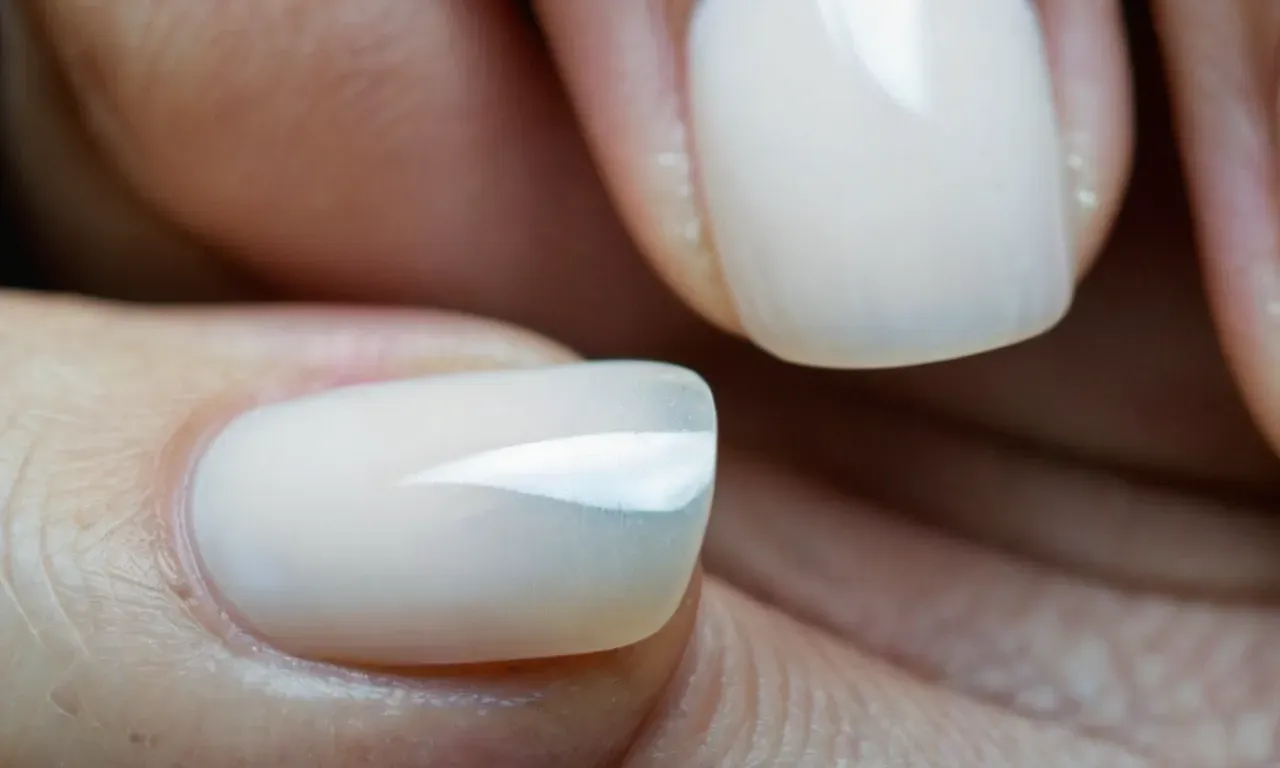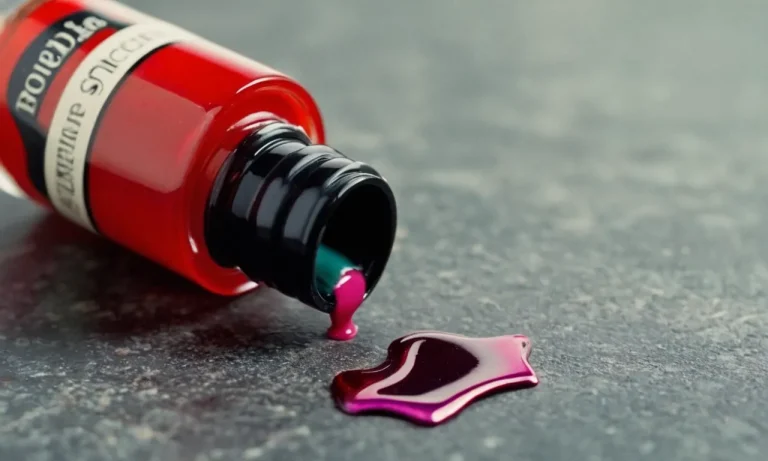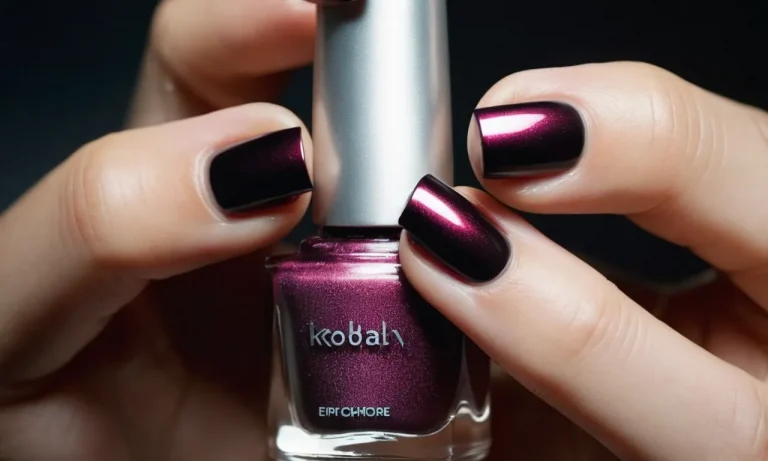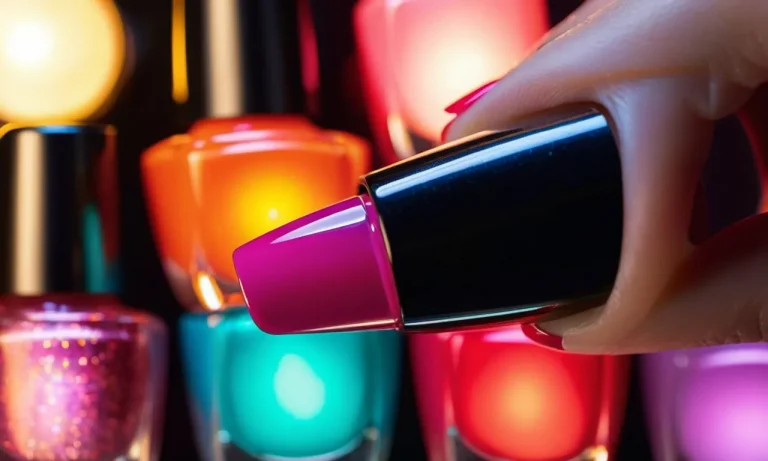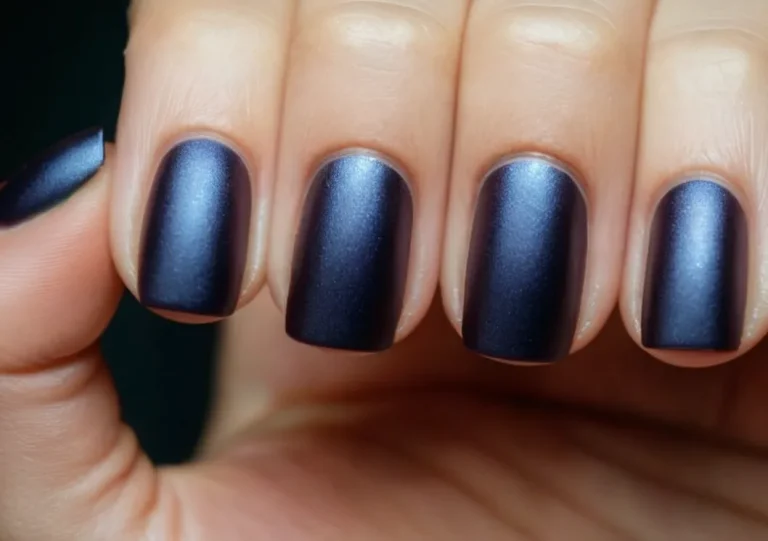Why Is My Big Toenail White?
If you’ve noticed your big toenail turning white, you’re not alone. Many people deal with changes in their toenails that leave them looking opaque and chalky.
If you’re short on time, here’s a quick answer to your question: A big toenail can turn white due to injury, fungal infection, or changes underneath the nail bed that disrupt normal nail growth.
In this comprehensive guide, we’ll explore all the possible causes of a white big toenail, when you need to see a doctor about it, and what effective treatments are available to restore the health and appearance of your nail.
What Causes a Big Toenail to Turn White?
There are a few potential causes for a big toenail turning white. The most common reasons are physical trauma, fungal infection, and nail bed disorders.
Physical Trauma and Injury
Physical trauma is one of the most common reasons for a toenail to turn white. If the toenail is injured, hit, stubbed, or crushed, it can damage the nail bed and cause the toenail to turn white. This happens because trauma can disrupt the blood supply to the nail bed, which provides nutrients and pigmentation to the nail.
When blood flow is disrupted, the nail loses its pinkish color and turns white or yellowish.
Some examples of physical trauma that may cause a big toenail to turn white include:
- Dropping a heavy object on the toenail
- Stubbing the toe forcefully against a hard surface
- Crushing injury from a sports accident or tight shoes
- Ingrown toenails that put pressure on the nail bed
The whiter the toenail appears after an injury, the more severe the damage is to the nail bed. Mild trauma may just cause white spots or streaks, while severe injury can turn the whole toenail white. Prompt treatment is important to prevent infection and allow healthy regrowth of the nail.
Fungal Infection
A fungal infection, known medically as onychomycosis, is another common cause of a big toenail turning white. Fungi such as dermatophytes or yeast can infect the nail through tiny separations or cracks. As the infection progresses, the toenail may turn white, thick, brittle, ragged, or distorted.
Risk factors for fungal toenail infections include:
- Excess moisture – from damp shoes, socks, or environments
- Minor nail or skin injuries
- Weakened immune system
- Diabetes, poor circulation, or other health conditions
- Use of public showers or pools
If left untreated, the fungal infection can spread to other toenails. Antifungal creams, oral medications, or laser treatments may be used to eradicate the infection and allow healthy new nail growth.
Nail Bed Disorders
Disorders affecting the nail matrix, where new nail cells are formed, can also lead to a white big toenail. These include:
- Terry’s nails – where the nail is mostly white with a narrow pink band at the tip, due to aging and diminished blood flow
- Half and half nails – the nail is white on one side with a brown-black band on the other, linked to kidney or liver issues
- Lichen planus – an inflammatory condition that can cause pitting and whitening of the nails
The exact cause is unknown for some of these nail matrix disorders. They may be related to systemic diseases, immunity, genetics, or normal aging. Treatments aim to manage the underlying condition.
When to See a Doctor About a White Big Toenail
A white big toenail can sometimes be a sign of a minor issue that will resolve on its own. But in other cases, it may indicate an underlying medical condition that requires treatment. Here are some general guidelines on when to see a doctor about a white big toenail:
If the Toenail Has Changed Shape or Texture
Changes in the shape or texture of the nail can signify a fungal infection or nail injury. See a doctor if the toenail has become thickened, brittle, or misshapen. The sooner fungal nail infections are treated, the better the outcome.
If the White Area Is Expanding
A white area that is increasing in size, especially if it extends to the nail bed, warrants medical attention. This could mean the fungal infection is progressing or the trauma is worsening.
If the Toenail Is Partially or Completely Detached
Having part or all of the toenail detached from the nail bed is not normal. See a doctor to determine the underlying cause, such as injury or infection, and to prevent complications.
If There Is Persistent Pain or Discomfort
A white toenail that is consistently painful, even if there are no visible changes, could indicate injury, infection, or nail disease. Do not ignore ongoing toenail pain or discomfort.
If There Are Additional Symptoms
Look out for other worrisome toenail symptoms along with the white discoloration, like redness, swelling, foul odor, discharge, numbness, or bleeding. Multiple symptoms warrant an exam to diagnose and manage any underlying condition.
If You Have Diabetes or Poor Circulation
People with diabetes or compromised circulation from conditions like peripheral artery disease are at higher risk for toenail infections and other foot problems. See a doctor promptly for any abnormal nail changes.
If the Toenail Was Exposed to Trauma
Injuries like stubbing, dropping something on the nail, or ill-fitting shoes can all cause a toenail to turn white. If it does not start to improve with time, see a doctor to make sure there is no lasting damage.
If Home Care Does Not Improve the Appearance
Trying over-the-counter antifungal cream or nail hardener for a few weeks with no visible improvement indicates a doctor visit is in order. An oral antifungal or other treatment may be needed.
If the Discoloration Is Asymmetrical
A white toenail confined to one side or toe may require evaluation to rule out underlying disease. Uniform discoloration of both big toenails is more likely due to fungus.
In most cases, a prompt visit to the doctor is recommended when nails become persistently white. Early diagnosis and care can clear up issues before they become serious infections or problems. Keep an eye on the toenail and do not hesitate to get it checked if any unusual changes last more than a couple of weeks.
Treatments for a White Big Toenail
Medications
If a fungal infection is causing the white discoloration of the big toenail, a doctor may prescribe oral antifungal medications like terbinafine or itraconazole. These medications work by killing the fungus causing the infection, allowing the nail to grow back healthy.
The treatment course usually lasts for 6-12 weeks. Topical antifungal lacquers and solutions can also be effective and applied directly on the nail.
Nail Removal
In severe cases, a podiatrist may recommend partial or complete surgical removal of the infected big toenail. This is often done under local anesthesia. After nail removal, the doctor will prescribe an antifungal medication to clear any remaining infection and prevent recurrence.
New healthy nail tissue usually grows back over several months. This can successfully treat stubborn fungal infections.
Laser Therapy
Recent research has shown good results with laser treatments for white discolored big toenails caused by fungus. The laser light penetrates the nail and kills the fungal infection. Several treatments are usually required but this method avoids oral medications and nail removal procedures.
Clinical trials have found laser therapy to resolve infections in 70-80% of patients (study).
Preventive Care
To prevent white discoloration and fungal infection of the big toenail in the future, it’s important to practice good foot hygiene. Tips include:
- Keep feet clean and dry
- Wear breathable socks and change them regularly
- Wear shower shoes in public areas
- Disinfect nail salon tools before a manicure/pedicure
- Avoid picking at nails or skin around nails
- Carefully trim nails straight across to avoid ingrown nails
Catching and treating nail infections early can also prevent more severe infection and nail damage down the line. Seeking professional treatment is key if over-the-counter antifungals are not improving white discoloration of the big toenail.
With the right care, it’s often possible to restore the health and appearance of the nail.
Conclusion
A white big toenail can happen for many reasons, ranging from trauma to fungal infection. While the discoloration may be harmless in some cases, it’s important to get an evaluation from your doctor, especially if the nail change is accompanied by pain or other symptoms.
With professional diagnosis and proper treatment, you can restore the healthy appearance of your toenail. Be patient through the process, as it takes time for nails to grow out. Focus on prevention by wearing proper footwear, treating athlete’s foot, and avoiding injury to your toes.

